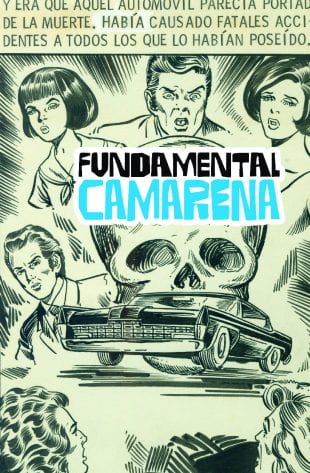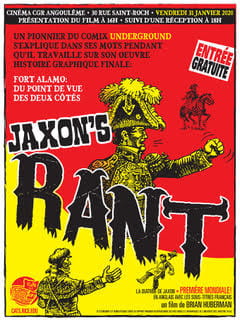Huberman and Sperandio shine spotlight on two all-but-forgotten artists at Angoulême
Every year, the ancient town of Angoulême in western France sees its population triple for four days in late January. The big attraction is the Angoulême International Comics Festival, the third-largest event of its kind in the world, celebrated since 1974 by the 200,000 visitors who decamp there annually from around the globe.
In 2020, two of those visitors will hail from Rice University: Visual and Dramatic Arts (VADA) professors Brian Huberman and Christopher Sperandio are presenting projects spotlighting two oft-overlooked comic artists in a trip sponsored by the VADA chair.

VADA professor Christopher Sperandio’s new book, “Fundamental Camarena,” features a 2019 interview with the artist and over 90 pages of his drawings.
Sperandio, associate professor of painting and drawing, has written a monograph about Mexican comic artist Julio Camarena. During the peak of his career in the 1960s and 1970s, Camarena produced multitudes of the microcuentos that Sperandio has long studied both personally and professionally.
Now in his 80s, Camarena “is an artist who is completely forgotten,” Sperandio said. His book, “Fundamental Camarena,” was produced out of an ongoing interdisciplinary collaboration with Jane Grande-Allen in Bioengineering.
“It got me thinking about a project that Brian had been working on where he made this documentary about a Texas comic book artist,” Sperandio said.
“And I thought, ‘Hey, I’m making something about another comic artist, you made something about another comic artist — let’s go to one of the biggest comic book festivals in the world and show your film and present this book.’”
Huberman, professor of film, will be screening his documentary on Jack Jackson, “Jaxon’s Rant,” which is an official Angoulême festival selection.
Better known by his pen name, Jaxon is considered by some to be the first underground comix creator. “Jaxon’s Rant” follows the San Antonio-born artist over a year as he attempts to finish a sprawling passion project: a 166-page story of the Alamo told from both Mexican and Anglo points of view, painstakingly hand-drawn and inked with an old-fashioned dip pen.
Tragically, the finished comic would never be seen by Jaxon’s intended audience.

VADA professor Brian Huberman’s documentary, “Jaxon’s Rant,” has been dubbed in French for the Angoulême festival.
“It was his last grand gesture,” Huberman said. “The Daughters of the Republic of Texas refused to sell it in their gift shop because there was too much sex and violence in the piece.”
Three years later, Jaxon shot himself outside the gates of his family cemetery.
“Julio Camarena and Jack Jackson are terrific artists who, both in their own way, have been overshadowed by other things,” Sperandio said. “The great thing about being an academic is that we can peer into the dusty corners of history and drag things back out into the light and say, ‘Hey, this is an important thing to look at.’”
Together, Huberman and Sperandio hope that showcasing these two artists for a big, broad audience such as that of Angoulême will draw attention to their bodies of work — and also to the work that academics do to preserve and promote what could easily be forgotten.
“Taking this film and this book to France and representing Rice University is amazing,” Sperandio said.

